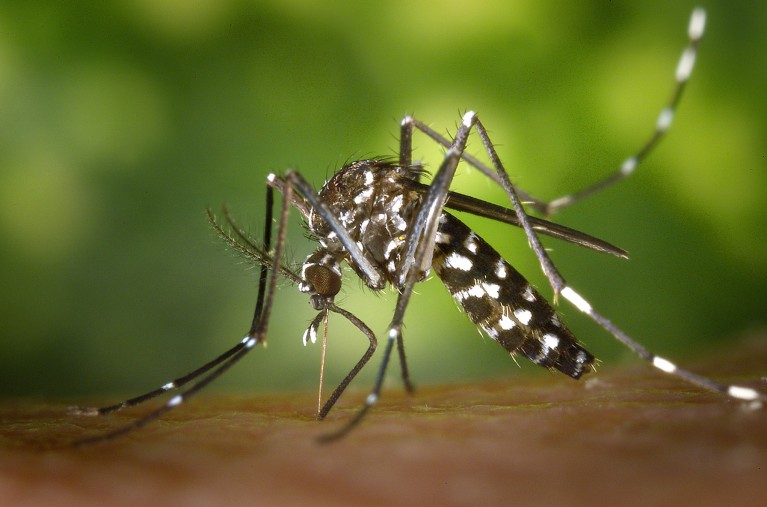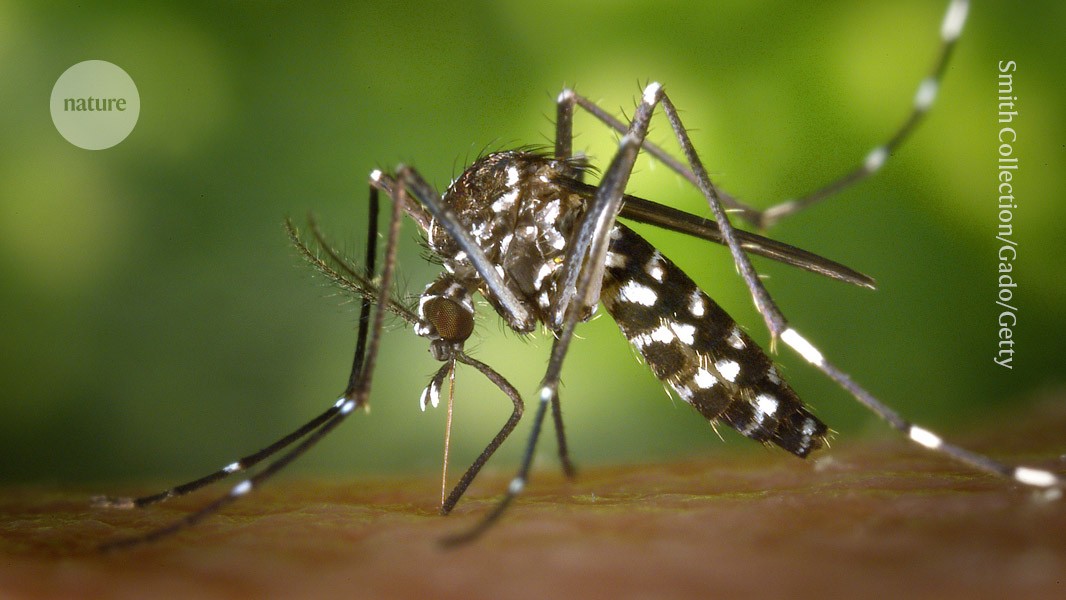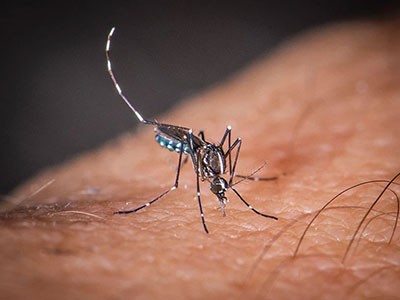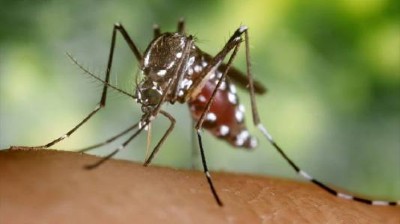
The Asian tiger mosquito (Aedes albopictus) is easily identified by its black-and-white-striped legs.Credit: James Gathany/CDC via Smith Collection/Gado/Getty
Climate change is turning Europe into a breeding ground for mosquito-borne diseases, researchers warn. Longer summers, hotter temperatures and heavy rainfall are creating favourable conditions for mosquitos in places where they couldn’t previously thrive.
Figures published last week by the European Centre for Disease Prevention and Control (ECDC) show that there have been 715 locally acquired cases of West Nile virus (WNV) across 15 countries in Europe so far this year, surpassing the number reported in the same period last year and Europe’s 10-year average. As of 4 September, 51 people had died as a result of the infection.
Tropical diseases move north
“This has become the new normal,” says Céline Gossner, a specialist in emerging and vector-borne diseases at the ECDC in Stockholm, Sweden. The number of cases of WNV is likely to rise throughout September and October, she adds.
Researchers say people who live in areas where outbreaks have been reported should take precautions to avoid mosquito bites.
“We are faced with a problem where new places could become hotspots of transmission that were not prepared for this before,” says Houriiyah Tegally, a genomic epidemiologist at Stellenbosch University in South Africa.
Deadly fever
About 20% of WNV infections result in West Nile fever, which causes fever, headaches, vomiting and fatigue. In less than 1% of cases, the disease causes neurological complications, which can include a life-threatening swelling of the brain.
“Typically, most of us have an immune system that just knocks it out,” says Stephen Rich, a medical zoologist at the University of Massachusetts Amherst. But older people and those with compromised immune systems are vulnerable to more-severe complications, he adds. In Europe, most of the reported cases are in people aged over 65 years.
The Culex pipiens mosquito, which transmits WNV from infected birds to humans and other animals — particularly horses — is native to Europe, and the virus has been present on the continent since the 1950s. But climate change has led to extended transmission periods and has meant that more regions are facing outbreaks, including areas that have not reported WNV infections before. “When these viruses spread in communities that have no previous immunity, then you can see large outbreaks,” says Rachel Lowe, a climate and health scientist at the Barcelona Supercomputing Center in Spain. A study published earlier this year concludes that climate change facilitated the spatial spread of WNV in Europe1.
How climate change is hitting Europe: three graphics reveal health impacts
Warmer conditions have also allowed the Asian tiger mosquito Aedes albopictus, which transmits the ‘tropical’ diseases dengue and chikungunya, to expand its range. The species has now become established in 13 European countries and has been introduced to 7 others. Both diseases are spreading as a result: this summer, Italy and France reported 22 locally transmitted cases of dengue, and a chikungunya case has been detected in France.
As the number of warm and wet days increases, mosquitoes — which flourish in these conditions — are “spreading to higher latitudes and also higher altitudes”, says Lowe.
Although climate change is an important driver of the disease outbreaks, it is not the sole culprit. Increased travel, especially after the COVID-19 pandemic, is aiding the dtransmission of viruses across borders. The rise in dengue cases in Europe is partly a side effect of record outbreaks in other parts of the world: South and Central America are currently battling their worst-ever dengue season, with cases in 2024 already around 230% higher than they were at the same time last year.
A July preprint, on which Tegally is a co-author, found that dengue virus strains in Ethiopia closely resemble those in Italy’s 2023 outbreak2. “It’s impossible to prove the directionality of this movement,” says Tegally. But this “tells us that the world is very connected, and Europe could at one point, if not already, act as a source of these arboviruses as well, because there’s local transmission”.
Don’t get bitten
With mosquito-borne diseases on the rise in areas where they have previously been uncommon, researchers say people should take care to avoid being bitten, by using repellent, wearing long-sleeved, light-coloured clothing and keeping windows covered with mosquito screens.
Ensuring there is no stagnant water in urban gardens, plant pots or flower vases also helps by reducing the number of potential breeding sites, says Lowe. The Asian tiger mosquito is easily identified by its black-and-white-striped legs, she adds.
Dengue is spreading in Europe: how worried should we be?
Scientists also warn about the risk of asymptomatic carriers unknowingly contaminating blood banks with diseases such as WNV when they donate blood. “While the risk is well contained in some way, because we have a lot of tests and procedures, it might affect the availability of blood supplies and organ supplies”, says Celine. The US Centers for Disease Control and Prevention found that 190 blood donors tested positive for WNV in the United States this year.
Emerging risks like this highlight the need for careful surveillance of mosquito-borne diseases, even in areas where they are not endemic.
“There is always the risk of the emergence of a new vector-borne disease,” says Gossner. “We need to be prepared.”







More News
Rage against machine learning driven by profit
Two-factor authentication underpins the precision of the piRNA pathway – Nature
AI’s international research networks mapped